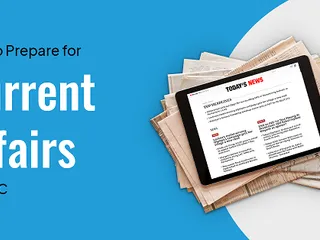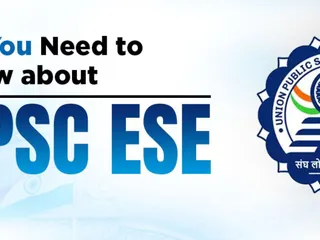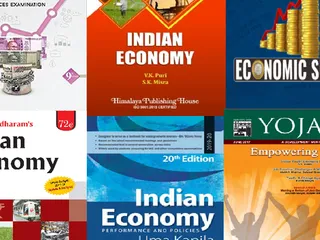UPSC CSAT (Civil Services Aptitude Test) is a crucial part of the UPSC Civil Services Preliminary Examination. It primarily tests candidates' reasoning, comprehension, and decision-making abilities. Here are important tips to help you prepare effectively:

1. Understand the CSAT Pattern and Syllabus
- CSAT is the second paper in the UPSC Prelims, consisting of 80 questions for 200 marks.
- Topics:
- Comprehension: English language comprehension, reasoning, and decision-making.
- Logical Reasoning: Patterns, puzzles, series, analogies, and deductive reasoning.
- Quantitative Aptitude: Basic mathematics, percentages, profit & loss, time and distance, algebra, etc.
- Data Interpretation: Graphs, charts, tables, and data analysis.
- General Mental Ability: Problem-solving, decision-making, and analytical ability.
2. Focus on Key Areas
- Comprehension: You don’t need to be a language expert, but practice reading and understanding passages quickly. Focus on grasping the main idea, tone, and inferences. Regular practice through newspapers or UPSC-specific comprehension materials can help.
- Logical Reasoning: Practice questions involving series, seating arrangements, Venn diagrams, and blood relations. Analytical reasoning is also critical, so focus on solving puzzles and logical deduction.
- Quantitative Aptitude: Revise concepts from basic school-level mathematics, especially focusing on time and work, percentages, ratios, profit and loss, speed and distance, and probability. Practice is the key to getting better at these questions.
- Data Interpretation: Focus on interpreting graphs, bar charts, and pie charts quickly. Practice with datasets and numerical data to build confidence.
3. Make Use of Quality Resources
- CSAT-specific books:
- "CSAT Paper 2" by M. K. Pandey: Excellent for reasoning, quantitative aptitude, and comprehension practice.
- "CSAT Manual" by Tata McGraw-Hill: Comprehensive and covers all CSAT sections.
- "Analytical Reasoning" by M. K. Pandey: Focus on reasoning.
- "Quantitative Aptitude for Competitive Examinations" by R.S. Aggarwal: A good resource for quantitative aptitude.
- Online Resources:
- Mrunal.org: Offers resources for both CSAT and General Studies with a focus on the Quantitative Aptitude and Reasoning sections.
- Unacademy and BYJU's: These platforms offer dedicated courses for CSAT preparation, including practice tests, lessons, and strategies.
- Vision IAS and Drishti IAS: These institutes offer specific CSAT programs and study materials that you can follow.
4. Solve Previous Year Papers (PYQs)
- PYQs are essential for understanding the types of questions asked and the exam pattern. Solve the last 5-10 years' CSAT papers regularly. This will help you get familiar with the question types and difficulty level.
- Focus on analyzing your mistakes and improving those areas where you're weak. Practice timing yourself while solving these papers to improve your speed.
5. Regular Practice with Mock Tests
- Take CSAT mock tests regularly, especially as the exam approaches. This helps build speed and accuracy, both of which are crucial for success in the exam.
- Test series from institutes like Vision IAS, BYJU's, or Mrunal are good options to get a real-time exam experience.
6. Time Management
- Time management is crucial in CSAT as it is a time-bound exam.
- Focus on answering easy questions first and then move to harder ones.
- Allocate time for each section (e.g., 40 minutes for Quantitative Aptitude, 40 minutes for Reasoning, etc.).
- Don’t spend too much time on one question. If stuck, move on to the next one and come back later if time allows.
7. Focus on Scoring Questions
- Some sections in the CSAT paper tend to be easier and can fetch you good marks if you focus on them:
- Comprehension (5-10 questions)
- Logical Reasoning (5-10 questions)
- Quantitative Aptitude (10-15 questions)
- Data Interpretation (5-8 questions)
- Make sure you understand these sections thoroughly, as they often have straightforward solutions.
8. Improve Your Mental Agility
- The CSAT exam requires you to make quick decisions and apply logic under pressure. Practice solving problems in a time-constrained environment to improve your mental agility and speed.
9. Don’t Neglect the Negative Marking
- Remember that 1/3rd of the marks will be deducted for each wrong answer, so it’s better to leave a question if you're unsure about it.
- Be selective in answering and avoid guessing blindly.
10. Mindset and Confidence
- CSAT is an elimination paper. You need to score 66 marks (33%) to qualify. Keep a calm and positive mindset, as stress can impact your performance.
- Regular practice, revision, and mock tests will build confidence and help you avoid nervousness on the exam day.
11. CSAT Preparation Plan
- Daily practice: Dedicate at least 2 hours daily to CSAT-specific practice.
- Alternate between Quantitative Aptitude, Reasoning, and Comprehension.
- Focus on accuracy first and then work on improving speed.
- Weekly revision: Once every week, revise all the topics you have studied and attempt a mock test.
- Month-wise strategy:
- First 2-3 months: Focus on building the foundation with NCERTs, basic books, and online resources.
- Next 2 months: Start solving PYQs, and mock tests. Analyze your weak areas and work on them.
- Last month: Take full-length mock tests, improve time management, and revise all topics.
By staying consistent with practice and keeping your strategy focused on high-yield topics, you can easily qualify the CSAT paper and move ahead in the UPSC Prelims.


















